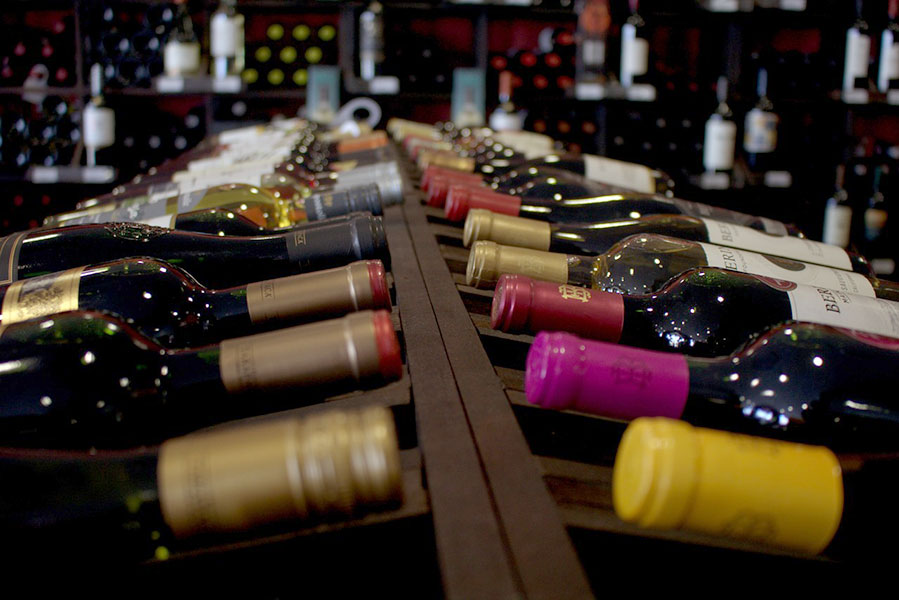Spain is undoubtedly one of the worlds major wine producers, and few of the nation’s beverages are quite as well known as Rioja. This drink is as much a part of the Iberian culture as glorious sunshine, Jamon, sangria and siestas, and the deep, fruity flavours of this red wine or crisp, vanilla tones of the white variations are akin to a Spanish holiday in a glass…
Rioja wine begins with the Tempranillo grape, native to the Spanish province of Rioja
Rioja wines are forged using the Tempranillo grape, which is available worldwide but native to the Spanish province of Rioja that provides the beverage with its name. While this territory may not be quite as renowned for it’s wine production as celebrated French regions such as Bordeaux, this is surely an oversight; it’s rare to find such an immaculate blend of oak-aged dryness and flavoursome fruits as you will in a bottle of Rioja. Thankfully this oversight pays dividends for the consumer, with these wines less likely to fall foul to overpricing and sub-standard produce that trades upon the region of creation.
Rioja wine has four label colours according to the classification
While bottles of Rioja will be readily available on the shelf of any reputable dealer, however, it pays to be educated on the variety of classifications available from this vine. With four primary classifications, conventional Rioja is just the beginning of a delightful journey through taste and aroma. Next time you are shopping for a bottle to accompany a meal, take a good look at the label before settling upon a purchase. When we are talking about Rioja wine label colours we are not speaking about the big label at the front showing the name of the wine as this is a design choice from the winery but rather the little label at the back of the bottle that shows the official classification. These labels are colour coded to make it super easy to know what classification of rioja wine you are holding in your hand with just a quick glance.
Rioja wines are governed by a quality control board based in the Spanish province from which the drink takes its name, the Consejo Regulador DOCa Rioja, who ensure that all wines that bear the Rioja name meet the strict standards set by these ambassadors. To this end, colour-coded labels and stamps that make each strain of the vine easy to identify will be included on each bottle that you review. The Rioja wine colours are green, red, deep burgundy and finally blue.
Young Rioja – label colour, green
If the bottle that you hold in your hands is described purely as Rioja, you can rest assured that you will be sipping on a delightful vintage, but one of the youngest variations of the drink; indeed, Rioja was formerly known as Vin Joven, which translates as Young Wine. The produce of a classic bottle of Rioja will be oak-aged for a short period of time, usually around a month or two, before being bottled and shipped for sale. This creates a ripe taste, with the fruity components particularly prominent. Young bottles of Rioja will typically be branded with a green label.
Crianza Rioja – label colour, red
The most popular variation of the vine, however, is undoubtedly Crianza. This is a twist on traditional Rioja is an appealing selection for the more casual consumer thanks to it’s full-bodied yet clean taste, wide availability and low price point; it’s very rare that a quality, mouth-watering bottle of Crianza will cost more than €20. The key difference between this beverage as a common or garden variety Rioja is simply the time the wine spends maturing in oak, with Crianza typically aged to a bare minimum of one year – and more often than not a further year maturing in the bottle – before reaching the shelves of a wholesaler. The Consejo Regulador DOCa Rioja identifies Crianza with a red label.
Crianza Rioja – label colour, deep burgundy
For the Rioja aficionado, however, the wine really begins to come into it’s own with the Reserva strain. Many experienced wine drinkers will not consider consuming anything below this level, due to the extended period spent maturing – which must be a bare minimum of three years, at least one of which was spent in oak. Perhaps more importantly, however, Reserva wines are also made from only the finest grapes available during the harvest of this Spanish province, hand-picked during what is considered to be a particularly fine season for growth and cultivation. Another appeal of Reserva wines – which are available in both Red and White – is the delicate balancing act they perform on the palate, blending the fruit explosion of a Crianza with slightly more oaky overtones. Best of all, a quality bottle of Reserva can still be purchased without breaking the bank; oftentimes, you will have change from €35 whilst still serving a beverage that will delight any dinner party guests; look out for a label of deep burgundy when shopping for a Reserva wine.
Gran Reserva Rioja – label colour, blue
Finally, the highlight of any Rioja enthusiast’s day; is the Gran Reserva. Only the very, very finest grapes of an exceptional growing season will be considered for inclusion in this vintage before the wine spends a bare minimum of five years reaching maturation, of which at least two must be spent ageing in an oak cask.
Despite this, many wineries prefer to allow the grapes as long as they feel they need to truly achieve their taste potential, and as a result, a bottle could be aged up to ten years before it reaches a shelf – and many collectors allow fine bottles of Gran Reserva to age in cellars for decades. Naturally, this leads to a very full-bodied, oaky taste and a price tag that befits such luxury, but Gran Reserva wines are truly a treat for the tastebuds, with at least one such bottle winning the coveted title of Wine of the Year in recent memory. A blue label from the Consejo Regulador DOCa Rioja will assure you that you are purchasing something truly special.
Food pairing with Rioja wines
Part of the appeal of Rioja wines is the flexibility provided when paired with foods, as any bottle will make a fine accompaniment to a savoury dish. Rich, gamey meats such as venison or a well-cooked steak or beef dish will bring out the fine subtleties of the wine, as will strong cheeses, though anybody that prefers to forgo animal products will also enjoy matching their Rioja of choice to a vegetable curry.
However, you decide to enjoy your Rioja, however, you are sure to do so; investigate which strain of this vine you will be purchasing, and prepare yourself for a hugely enjoyable journey of taste through one of the most scenic areas of the Spanish countryside.

